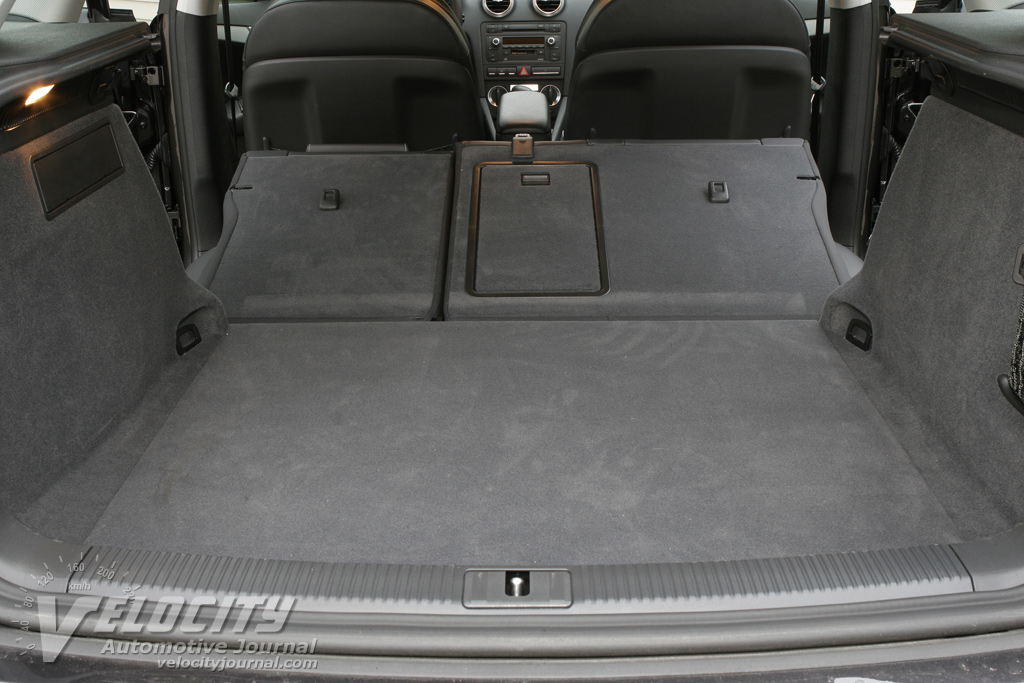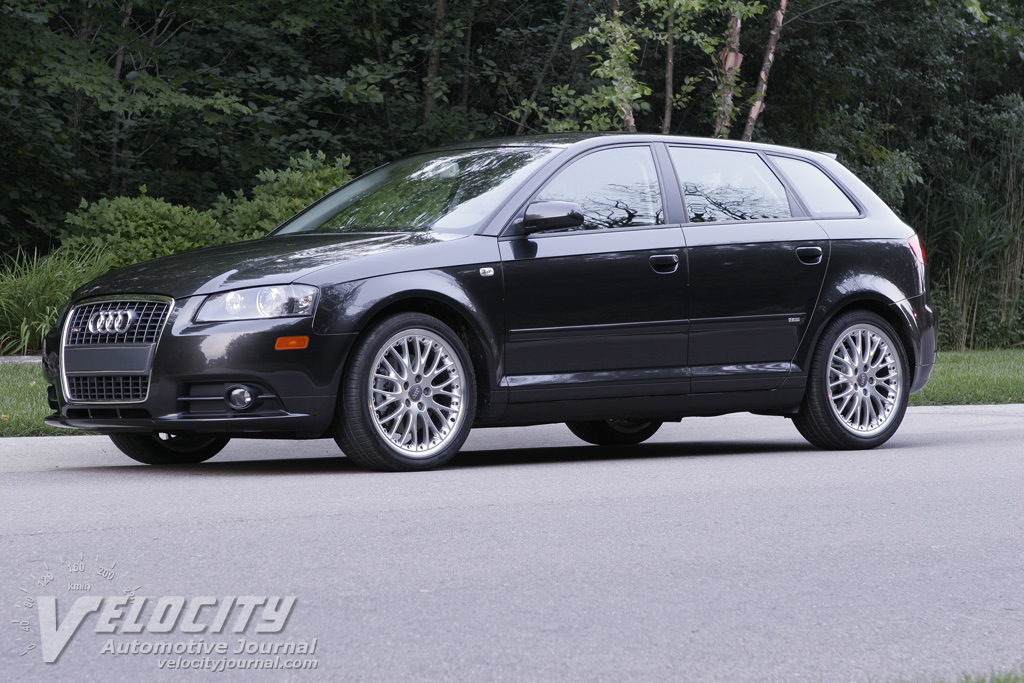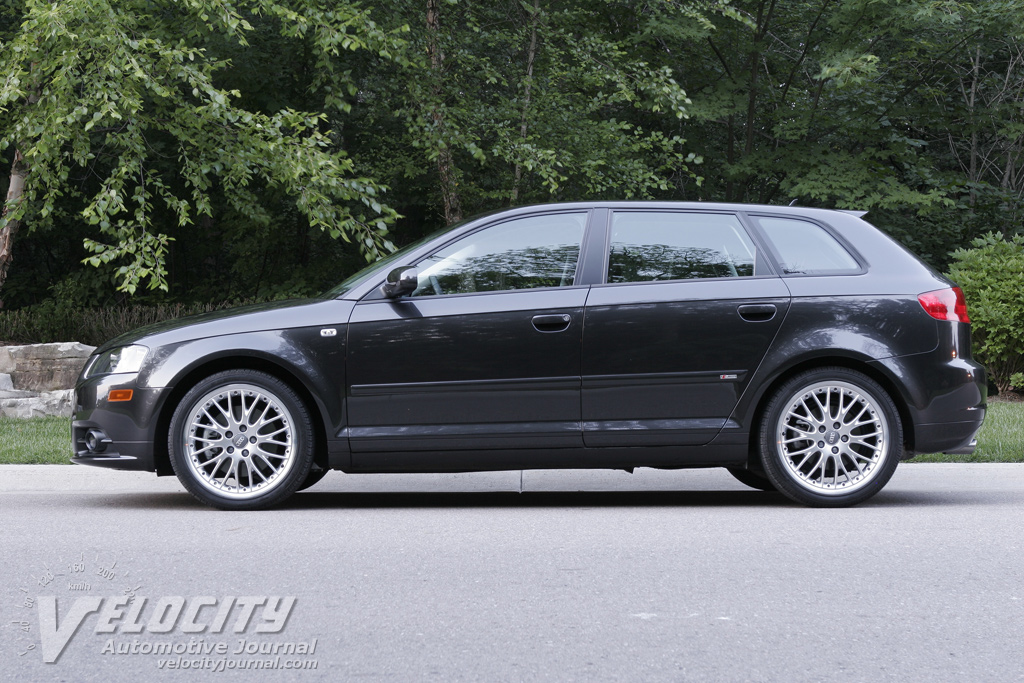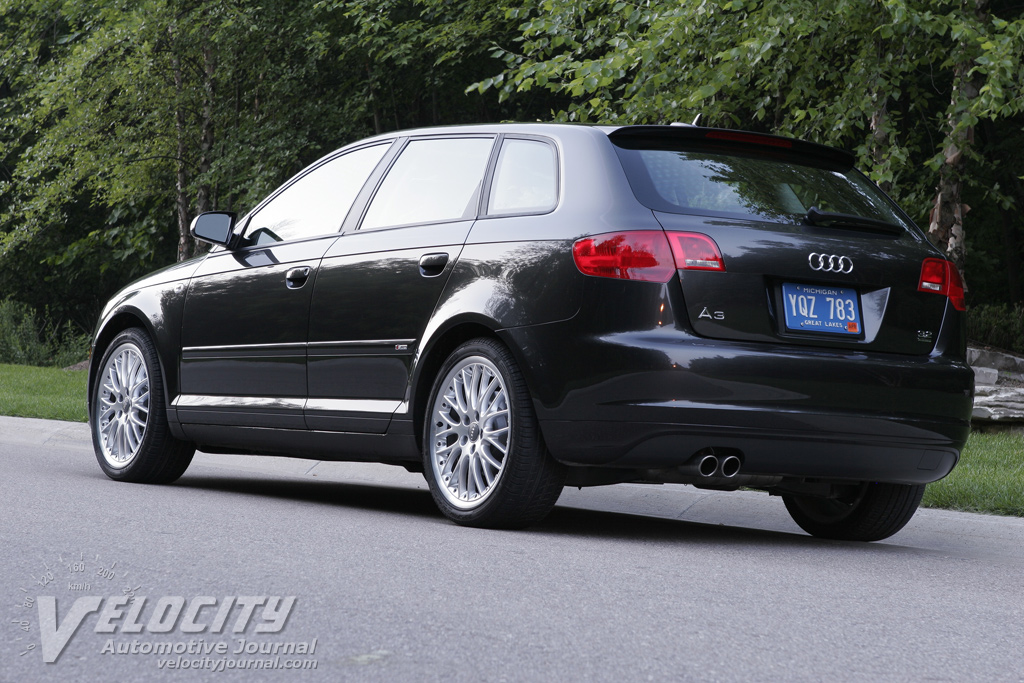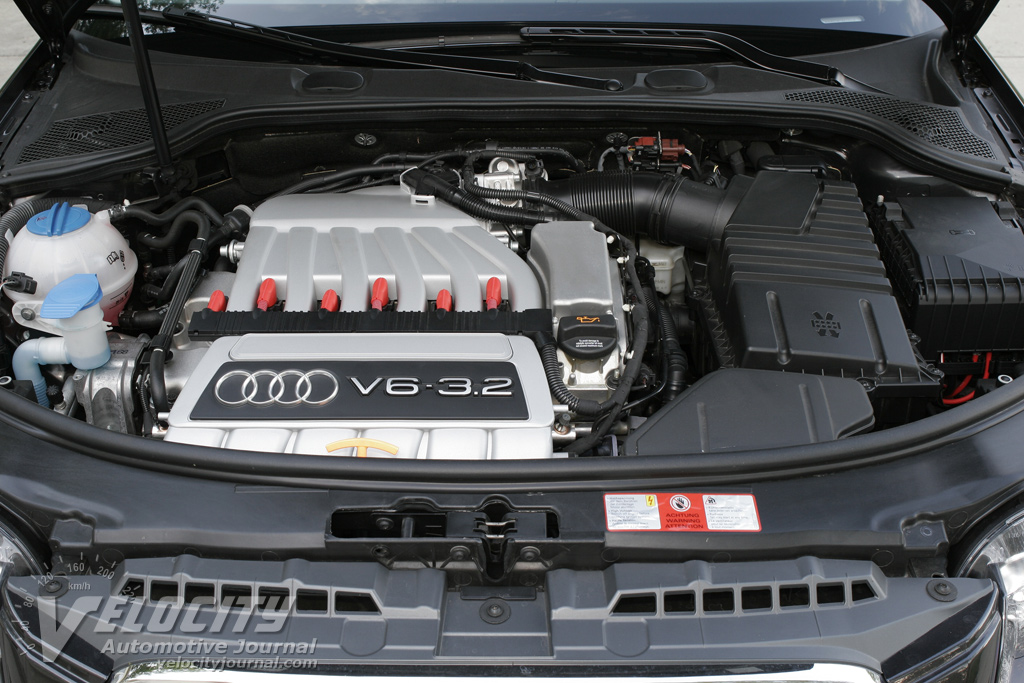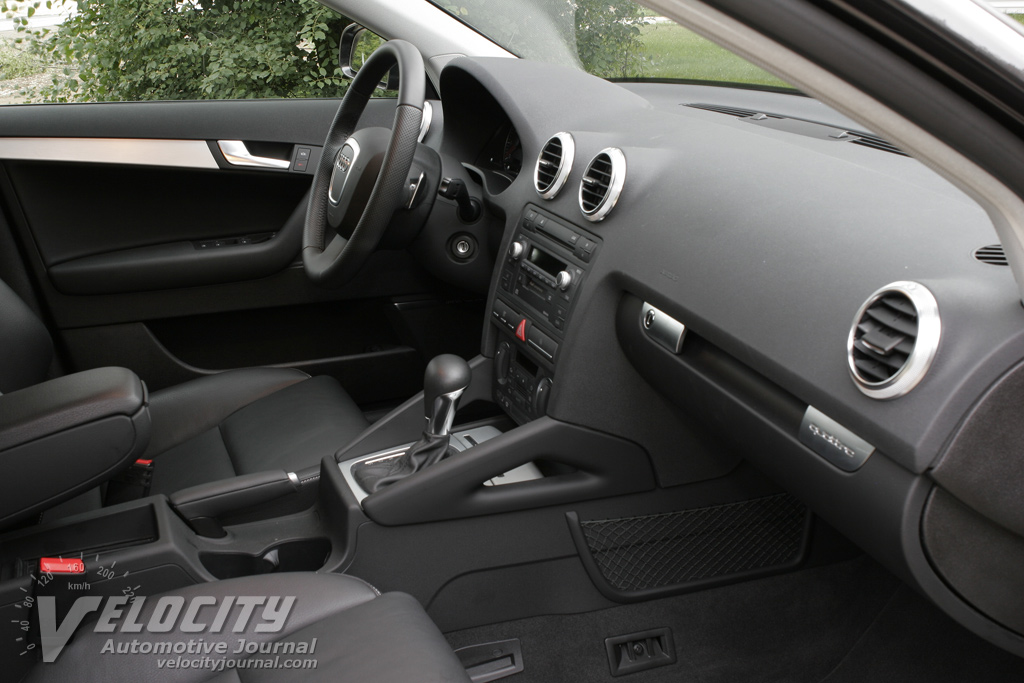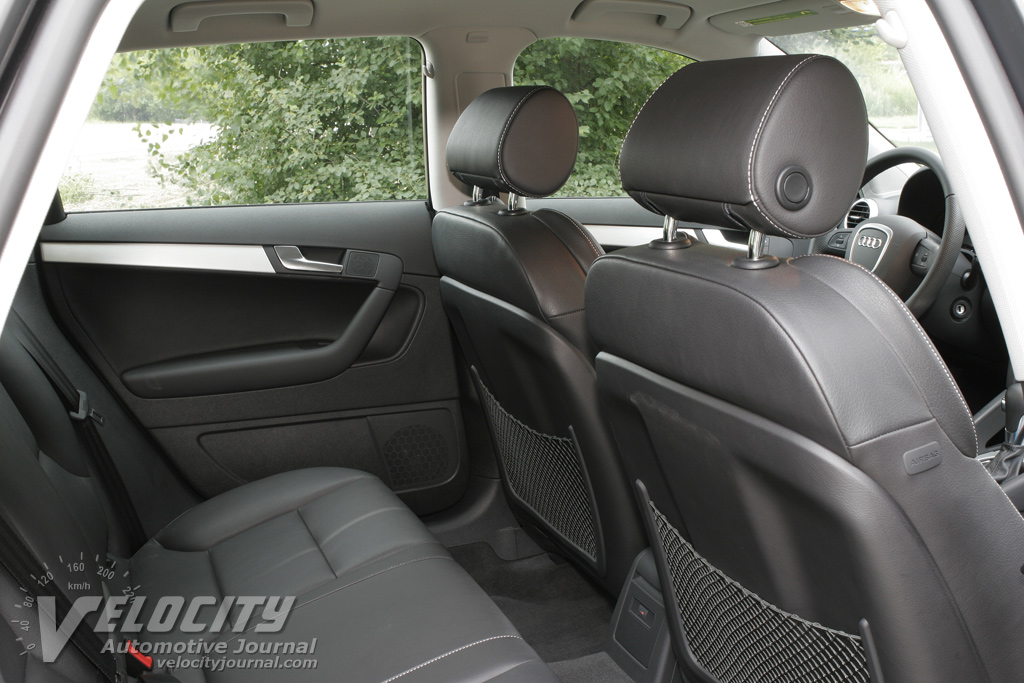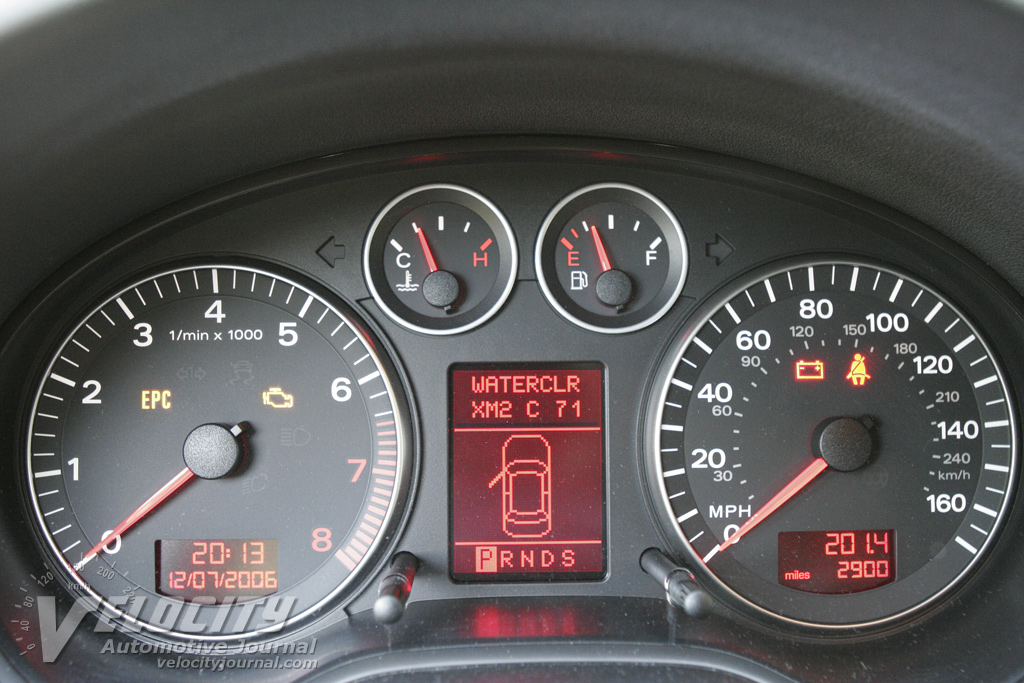2006 Audi A3 3.2 S line quattro DSG6
07/06/2006
Shahed Hussain
Let's be honest. How many readers are interested in arguably the most expensive compact hatchback sold in the USA? If you are reading this review, then Audi may have a chance to get you interested in an A3. This Audi won't impress those who like flash. For them, Audi has the A4, which seems to be preferred by that target audience.
As the driver slips behind the seat, the first thing noticed is the surprisingly solid "thunk" of the door closing. This is no flyweight economy car. Interior color scheme is typical German: dark gray with metallic accents. Since this is an Audi, aluminum trim abounds. Examples include the door handles, console and vent bezels, and the glove box latch. The aluminum trim package is standard on the A3 quattro, but is optionally available for the A3 2.0T.
Audi equips the A3 3.2 quattro with standard leather upholstery. These firmly padded sport seats have prominent bolsters that keep the driver from sliding around. Without the optional Open Sky system (sunroof), headroom is plentiful. The front seats will slide back far enough for drivers over 6' tall, although at the expense of rear seat legroom. Although the driver has a 12-way adjustable power seat, the passenger must make do with manual levers. This oversight is disappointing, since one would expect an optional power adjustable passenger seat in a car that costs well over $30K.
Radar detector owners will be annoyed that the 12V power outlet is located under the center armrest. The customary coiled radar detector cord now has to stretch along the entire center console, which is inconvenient. Of course, since radar detectors are illegal in most of Europe, this oversight probably did not concern the interior designers.
Since the A3 is a hatchback, the 60/40 split rear seats fold down for maximum cargo versatility. A small pass-through allows skis to fit within the passenger compartment. Audi thoughtfully includes a ski sack with the optional Cold Weather package, which also provides heated exterior mirrors, front seats, and windshield washer nozzles.
The sole transmission available for the A3 3.2 quattro is the 6-speed DSG (Direct Shift Gearbox). Drivers accustomed to a conventional torque converter automatic will be delighted with the extra shift controls engineered into the DSG. For relaxed cruising, just leave the console selector on "D" and the DSG behaves just like a normal automatic transmission. If you want to slice through traffic or carve corners, then choose the "S" mode, and the DSG will stay in the lower gears longer for better throttle response. Still not enough control? Then shift into the fully manual mode by sliding the console gear selector to the right, and choose your own gears, just like a manual, but without the bother of a clutch. As an added bonus, the steering wheel-mounted aluminum paddle shifters allow full manual shift control at any time, no matter what mode the transmission is in. So if you suddenly feel like passing that SUV blocking your view of the road, click the left paddle for a quick downshift or two, and just blast by.
Audi managed to cram its smooth 3.2L V-6 transversely into the engine bay. This 250-bhp powerplant is also available on the A4 and A6, but has the lightest burden in A3 quattro. However, with a curb weight of 3,660 lbs, the A3 outweighs a midsize Toyota Camry XLE V-6 (3,516 lbs.). This extra heft hurts acceleration from a standstill, where the A3 feels slightly sluggish. Audi claims 0-60 mph in 5.9 seconds, so despite the initial lethargy, the A3 is deceptively quick. Once the tachometer exceeds 3,000 RPM, the A3 comes alive as it rushes eagerly past 100 mph. Audi clearly engineered the powertrain for autobahn performance, so the A3 really shines above 80 mph. Road and engine noise are pleasantly subdued at triple digit speeds. Only at full throttle does the pleasant burble from the dual-tip exhaust penetrate the cabin.
A benefit of the heavy, stiff platform is stability at speed. The standard sport suspension shrugs off the worst bumps and potholes without upsetting the composure of the chassis. A soft thunk from the tires is the only indication that the suspension is soaking up road imperfections. Chassis flex is unnoticeable over broken pavement. The A3 seems to glide over the road without feeling disconnected from it.
As is typical for German automobiles, steering effort is relatively high, even at parking lot speeds. The payoff is superb communication via the fat leather-wrapped rim. The driver can feel every bump and pebble, but the steering has just enough damping to remove annoying kickback. Slight understeer is noticeable at high cornering speeds, and around tight curves. A welcome benefit of quattro all-wheel drive is a complete absence of torque steer, which compromises handling and steering on powerful front-wheel drive cars. With 236 lb.-ft. of torque from the V-6, a FWD A3 would have been a handful to drive, and frankly, not worth the premium over a VW GTI.
Optional 18-inch alloy wheels shod with 225/40R18 summer tires are a pricey ($1,000) option, but are essential to take advantage of this superb suspension's capabilities. Despite the short sidewalls, ride quality over the cratered roads around Detroit is especially impressive. The standard 17-inch alloy wheels are equipped with 225/45R17 all-season tires, which are better suited for the northern US, or drivers who don't wish to bother with separate sets of winter and summer tires.
For a relatively reasonable $800, choose the optional adaptive (swiveling) bi-xenon headlights, which provide impressive nighttime illumination. Be aware that these HID lights are extremely bright, and tend to annoy other drivers. This is a common problem with European cars that have a sharp beam pattern "cutoff", which tends to accentuate glare.
A comparison between the A3 3.2 quattro vs. the Subaru Impreza STI and Mitsubishi Lancer EVO IX is enlightening. All these cars are priced within a few thousand dollars of each other, but their characters are wildly different. The A3 cannot compete with the STI or EVO in raw performance, but it does offer a far more livable ride, superb refinement, and a versatile hatchback body. The A3 focuses on on-road handling and driving capability vs. the all-out track performance of the STI and EVO. For an enthusiast, the difference of purpose between the A3 vs. the STI and EVO puts these cars in separate segments, despite the superficial similarity in specification.
Let's consider the most burning question about the A3. Is the A3 3.2 quattro worth the extra cost over the competent, but more commonplace VW GTI? The answer is a qualified "yes". Why? Look at what you cannot get in a GTI: all-wheel drive (quattro), a smooth V-6 with a fat torque band, and interior design and materials that defines the benchmark in its class. Of these attributes, quattro is arguably the most important because it eliminates front-wheel drive torque steer, while it simultaneously enhances handling in any weather and road conditions. The other upgrades are just icing on the cake. If you are an enthusiast, and can afford the significant price premium compared to the GTI, the A3 deserves serious consideration.

